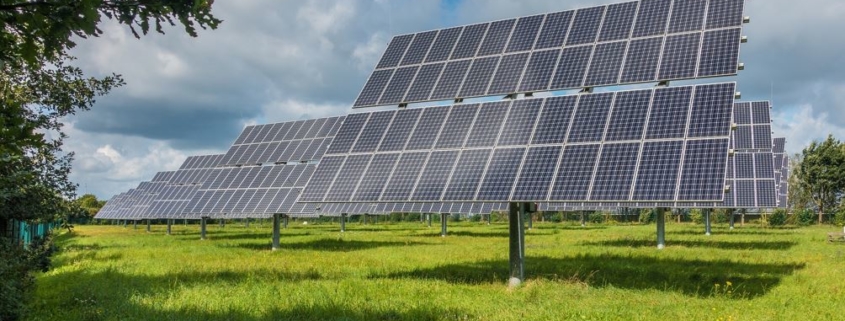How to Seed an Energy Transition
In the world of energy, government money is seed capital. Billions of stimulus dollars merely tickle a transition. Wholesale transformation at a national level — decarbonizing factories, changing out vehicle fleets, making buildings efficient — requires trillions. So, private investment must be enticed to follow.
Pension and sovereign wealth funds, endowments, family fortunes and corporate spending — these are among the large pools of capital that must be shaken loose to rewire, re-pipe and renovate our energy economy.
There are caveats to attracting big money. Investors need an expectation that money will be made. And how much to pay for an investment must reflect the risks being taken (the higher the risk, the lower the price).
So, encouraging investment in energy transition comes down to ensuring everyone involved makes money and lowering risks for investors. It’s a callously simple formula, but when it’s time to punch numbers into a spreadsheet, it doesn’t take much to turn hardened financial professionals into skeptics.
Here are four ways to help encourage investment in our burgeoning new energy economy.
Create policy certainty – Investors cite policy risk as the number one barrier to investing in long-term projects that are dependent on government pens. Multibillion-dollar investments must survive the winds of parliamentary change and cabinet shuffles. Investors despair when rules are rewritten or policies torn up. Well-defined carbon levies, tax treatments, stimulus commitments, regulatory parameters and emission targets are among a long list government and regulatory directives that must survive through elections. If you want people to play, don’t change the rules after you’ve set them.
Define terms clearly – “Green,” “clean” and “sustainable” are all nebulous words. For example, is carbon capture, utilization and sequestration considered clean? Some think so, others not. Is a nickel mine for battery materials sustainable? How green is a blue hydrogen project? What qualifies as a nature-based solution? We’re trying to reduce emissions ASAP, so clarity on the terminology that qualifies billion-dollar projects for preferential financing is paramount. Fifty shades of green means fifty shades of risk. Financial analysts must be able to convert colour palettes and subjective perceptions of cleanliness into quantitative spreadsheet parameters. To bring that clarity, policymakers, financial institutions and corporations must collaborate to define the terms of this new economy and ensure everyone is looking at things with the same coloured glasses.
Create market infrastructure – Infrastructure is not limited to facilities, factories and buildings. Markets are infrastructure too. Transparent signals from prices and commercial trends drive investment. Traditional energy enjoys such knowledge, but many areas of new energy still lack market foundations.
Consider the legacy infrastructure that’s been built around our oil, natural gas and electricity systems. Sophisticated financial instruments are well established to inform the risk-return calculus. Real-time prices, for immediate or future transactions, are quoted instantaneously to all market participants. Investors can run their spreadsheets, forecast and hedge their risk exposure, locally and across borders. Decision-makers behind billion-dollar investments can feel comfortable they know what’s going on.
In many regions, commodities like carbon credits and hydrogen still lack market transparency, depth and liquidity. Build transparent market infrastructure alongside physical infrastructure, and “they will come.”
Understand risk-return of the new energy landscape – Until recently, an energy analyst in the finance business was synonymous with being an oil and gas analyst. “Energy” was oil and gas, period. A century-plus of investing knowledge has contributed to a deep understanding of the risks and potential returns for every oil and gas jurisdiction in the world. Spreadsheets are easy to run.
Now, with the rise of renewables and momentum behind the energy transition, the energy landscape has expanded to include renewables, biofuels, nuclear reactors, batteries, hydrogen fuel cells, ammonia —the list goes on. That’s a good thing, except financial institutions like to diversify risk within an investment “bucket,” or portfolio.
How does a financial analyst construct a portfolio of new energy companies? Such a spreadsheet must compare the risk and return profile of a renewable diesel project with a solar farm, a hydrogen fueling station with a grid-scale battery facility. Each investment has a different set of financial modeling parameters. Historically, this wasn’t a problem because one-off clean energy projects were considered in isolation. But now there are co-dependencies and even competition between rising clean energy rivals. For example, in many markets, a battery competes with a hydrogen fuel cell. Unlike oil and gas, there are no precedents to guide the handicapping of bets on each.
Overcoming this risk-return knowledge barrier will require the experience of time, which in the world of finance is a soft way of saying that investors will have to lose money before learning how to make money. That’s not very satisfying to hear when there’s an urgency to put money to work as fast and as effectively as possible.
One way to shorten the investment learning curve is to loop full circle back to the first three points on my list.
Once investors have these proper inputs to help them reduce perceived risk, they’ll be more inclined to follow governments in financing new energy projects. Decarbonization of course depends on physical infrastructure, but faster decarbonization is predicated on building out that other infrastructure — one based on stable policy, clear information and a transparent market.


